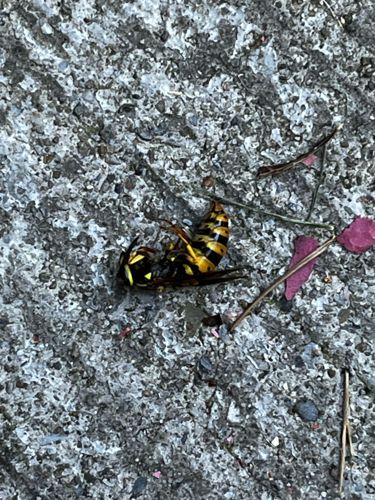Yellowjacket
Scientific Name: "Vespula spp." or "Dolichovespula spp."
Order & Family: Hymenoptera, Vespidae
Size: Typically 10-16 mm (0.4-0.6 inches)

Natural Habitat
Yellowjackets are commonly found in a variety of habitats, including urban areas, suburban gardens, forests, and fields. They build nests either underground, in protected cavities (like wall voids or hollow trees), or sometimes hanging from sheltered structures.
Diet & Feeding
Yellowjackets are predatory insects and scavengers. Adults feed on nectar and other sugary substances, but they hunt insects and other arthropods to feed their larvae. They are also attracted to human food, especially sweet items and meats.
Behavior Patterns
Yellowjackets are social insects living in colonies that can number in the thousands. They are typically most aggressive in late summer and early fall as the colony size peaks and food sources become scarcer. They are known for their defensive stinging if their nest is disturbed or they feel threatened.
Risks & Benefits
Risks: Yellowjackets can be aggressive, especially when their nest is approached, and their stings are painful and can be dangerous to individuals with allergies (anaphylaxis). They are considered pests when they interfere with human activities, especially around food. Benefits: They serve as important predators of many pest insects, helping to control agricultural and garden pests.
Identified on: 9/21/2025